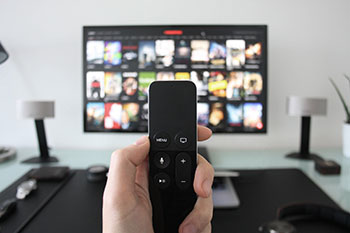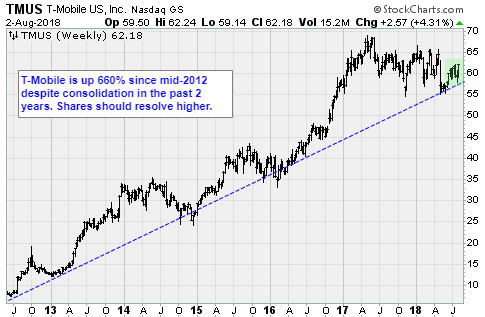Cable TV providers face steep challenge from wireless
Imagine a world without wires. Messaging, phone calls and media all streaming magically to all of your screens, anywhere. It is a cord-cutter’s dream.
Amazon.com (AMZN) announced on Thursday that Prime Video was coming to Comcast (CMCSA) cable boxes. Strange bedfellows, for sure.
The bigger story is the cable TV industry is in full panic mode.
From Lester Holt to the Kardashians, Comcast is a broadcast behemoth. It is parent company to Xfinity, NBC, NBC Universal, USA Network, Telemundo and E!. In 2017, the business had $84 billion in sales, making it the second largest broadcast and cable TV company in the U.S.
Unfortunately, since 2015, revenue growth has been slowing. More worrisome, in the era of Netflix (NFLX), YouTube and Amazon Prime, customers are beginning to flee.

Cable companies have themselves to blame. Despite flat wage growth, Fast Company reports that since 2000, the average satellite or cable TV bill grew a whopping 74%, from $60 to $100. Customers feel like they are getting gouged.
The result is cord-cutting. Customers are cancelling pricy cable subscriptions and filling the void with a-la-carte internet media streaming services. In 2017, all of the leading broadcasters lost subscribers. Comcast shed 150,000.
Bringing Amazon Prime Video, a competitor, to Xfinity service is a last-ditch effort to stem the losses. Prime Video has a portfolio of critically acclaimed shows, live events, and 160 premium channels/apps, including HBO, Showtime, Starz and Cinemax.
Unfortunately, it is hard to see what Xfinity adds. If customers go to Amazon directly, they can watch programing anywhere, on any device. They can even download their favorite shows to iPhones, iPads and Android devices.
In July, 2018, eMarketer, a digital marketing research firm, noted the pace of cord-cutting is accelerating. The New York company predicts cord-cutters will reach 33 million in 2018, and 55.1 million, or 20.8% of the traditional pay TV market, by 2022.
And it is going to get much worse when Disney (DIS) launches its streaming service in 2019.
The House of Mouse service, after swallowing 21st Century Fox, will be a one-stop media shopping outlet for everything from Star Wars, Marvel, and Pixar films, to long-running TV shows, The Family Guy and The Simpsons. It is a treasure trove of content, and it will all be available as a paid app.
The best way to play this trend is wireless providers.
The big wireless companies are building better networks, with more bandwidth. The ultimate goal is to offer a product to compete directly with the wireline and cable TV industry. Current LTE networks are good enough right now to stream media effectively. Next generation 5G networks will offer speeds 100 times faster.
A complete high-resolution media download will occur in seconds. It will be faster than most home cable WiFi connections. And it will be truly wireless.
With the entire media landscape heading toward internet streaming, putting together a bundle of applications that looks a lot like a cable TV package will not be a stretch. Media outlets will mimic Netflix, with applications for every platform.
All media will become portable, and will play on all screens with a few taps or swipes.
T-Mobile (TMUS) is the best wireless company in the country. John Legere, its chief executive officer, has embraced a customer service focused business model. New subscribers have followed.
During the second fiscal quarter, reported August 1, the company added 1.6 million net new subscribers. That marked 21 consecutive quarters with more than 1 million net additions. The churn rate, or the percentage of customers that stopped subscribing, was a record-low 0.95%.
Sales ticked up 4% to $10.6 billion, year-over-year. Cash flow was up 61%, to $774 million.
While these are impressive numbers, T-Mobile is on the precipice of a huge opportunity. Competing head-to-head with wireline and cable TV companies is a battle the company can, and should, win with its focus on customers.
It will mean a huge jump in revenues. It will change the shape of media consumption.
T-Mobile shares trade at only 11x trailing earnings. The market capitalization is $50 billion. By comparison, Verizon Communications (VZ) is growing slower, and has a market cap of $275 billion.
T-Mobile is about to embody the cord-cutter’s dream. Investors should consider the shares.
Best wishes,
Jon D. Markman




